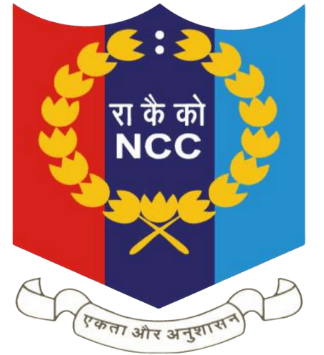Nutrition Basics
- Home
- >
- Nutrition Basics
Understanding Nutrition
Nutrition is the process through which our body receives essential nutrients from food to function efficiently. A balanced diet provides the necessary energy, builds and repairs tissues, and supports immunity. In India, where traditional diets are rich in grains, legumes, and spices, maintaining a nutritional balance is key to good health.
Good nutrition promotes optimal growth, boosts immunity, and prevents chronic illnesses.
Components of Nutrition
Macronutrients: The Core Nutritional Elements
Macronutrients are required in larger amounts and include:
Proteins
Function: Muscle development, tissue repair, enzyme and hormone production.
Indian Sources: Pulses (dal, rajma, chana), milk, curd, paneer, tofu, eggs, fish, chicken, soya chunks, sprouts.
Daily Requirement: 0.8–1.2g per kg of body weight.
Carbohydrates
Function: Primary energy source for daily activities and brain function.
Indian Sources: Rice, wheat, bajra, jowar, maize, potatoes, fruits, jaggery, honey.
Types:
Simple carbs: Sugar, refined flour (less healthy).
Complex carbs: Whole grains, millets (preferred for sustained energy).
Fats
Function: Brain health, hormone regulation, nutrient absorption (A, D, E, K).
Indian Sources: Ghee, butter, mustard oil, groundnut oil, coconut, nuts (almonds, walnuts), seeds (chia, flax, sunflower).
Types:
Good fats: Unsaturated fats (e.g., nuts, olive oil).
Bad fats: Trans fats, excess saturated fats (processed foods).
Micronutrients: Vitamins & Minerals
These are required in small amounts but are critical for maintaining health.
Vitamins
Vitamin A: Vision & immunity – carrots, spinach, pumpkin, mango.
Vitamin B-complex: Energy production – whole grains, eggs, dairy, legumes.
Vitamin C: Immunity & skin – amla, citrus fruits, guava, bell peppers.
Vitamin D: Bone health – sun exposure, fortified milk, egg yolk.
Vitamin E: Antioxidant – nuts, seeds, spinach.
Vitamin K: Blood clotting – green leafy vegetables, broccoli.
Minerals
Calcium: Bones & teeth – milk, curd, ragi, sesame seeds.
Iron: Hemoglobin formation – spinach, jaggery, dates, beetroot.
Zinc: Immunity – pumpkin seeds, nuts, whole grains.
Magnesium: Nerve function – nuts, seeds, leafy greens.
Potassium: Fluid balance – banana, coconut water, oranges.
Iodine: Thyroid function – iodized salt, seafood.
Water & Hydration
Water is essential for:
Digestion and nutrient absorption.
Regulating body temperature.
Flushing out toxins.
Hydration Tips for Indian Climate:
Drink 8–12 glasses of water daily.
Traditional hydrating options: Nimbu pani, chaas (buttermilk), coconut water, jaljeera, sattu drink.
Avoid excess sugary drinks and caffeine.
Dietary Fiber: A Digestive Necessity
Function: Improves digestion, regulates bowel movement, lowers cholesterol, manages blood sugar.
Types:
Soluble fiber: Oats, apples, legumes – helps control blood sugar.
Insoluble fiber: Whole wheat, vegetables – aids in preventing constipation.
Indian Sources: Whole grains (millets, wheat bran), fruits (papaya, guava), vegetables, legumes, flax/chia seeds.
Nutrition for Different Life Stages
| Stage | Nutritional Needs | Focus Nutrients |
|---|---|---|
| Infants (0–2 yrs) | Rapid growth | Iron, DHA, Calcium |
| Children (3–12 yrs) | Energy, development | Protein, Calcium, Vitamins A & D |
| Adolescents | Hormonal changes, growth spurts | Protein, Iron, B-vitamins |
| Adults | Maintenance & prevention | Balanced macros, fiber |
| Pregnant & Lactating Women | Fetal/maternal health | Iron, Folic Acid, Calcium, DHA |
| Elderly | Bone & cognitive health | Calcium, Vitamin D, B12, Fiber |
Balanced Diet: The Indian Way
Thali Approach
A traditional Indian thali (meal plate) naturally supports balance:
1 portion of cereal (roti/rice)
1 portion of protein (dal/pulses)
1–2 vegetable preparations
A small portion of fat (ghee/oil)
Salad or curd
Fruit (post-meal)
Portion Control & Timing
Eat smaller, frequent meals.
Avoid late-night snacking.
Practice mindful eating (slow, focused, tech-free meals).
Special Considerations in India
Vegetarian Diets
Need to ensure complete proteins (combine pulses & cereals).
Monitor B12 levels – supplementation may be needed.
Cultural & Religious Influences
Fasting traditions (e.g., Navratri, Ramadan) – balance with hydration and protein-rich meals.
Urban Lifestyles
Increased processed food intake – linked to obesity, diabetes.
Sedentary habits – call for conscious food choices and regular exercise.
Rural & Low-Income Groups
Traditional foods (millets, seasonal veggies, pulses) are nutritious and economical.
Promote kitchen gardens, local superfoods.
Malnutrition in India: The Double Burden of Health Inequality
Malnutrition refers to deficiencies, excesses, or imbalances in a person’s intake of energy and/or nutrients. It is one of India’s most pressing public health challenges, affecting individuals across all age groups and socio-economic backgrounds.
Types of Malnutrition
A. Undernutrition (Nutrient Deficiency)
Occurs when the body doesn’t get enough calories, protein, or micronutrients.
Subtypes include:
Stunting: Low height for age (chronic undernutrition).
Wasting: Low weight for height (acute undernutrition).
Underweight: Low weight for age.
Micronutrient Deficiencies: Lacking vital vitamins and minerals like iron, iodine, vitamin A, and zinc.
Commonly affected groups:
Children under 5 years
Pregnant and lactating women
Adolescent girls in rural areas
Overnutrition (Excessive Intake)
Refers to consuming more calories and nutrients than the body needs, often leading to overweight and obesity.
Health consequences include:
Type 2 diabetes
Hypertension
Cardiovascular disease
Fatty liver disease
At-risk populations:
Urban adults and teenagers
Middle and upper-income groups
Office-goers with sedentary lifestyles
The Double Burden of Malnutrition
India is facing a unique situation where undernutrition and overnutrition co-exist:
A child in a rural family may be underweight and stunted.
A working adult in the same household may be obese and diabetic.
This duality highlights the need for targeted policies based on geography, income, and age.
Causes of Malnutrition in India
Undernutrition
Causes:
Poverty: Inability to afford diverse, nutrient-rich food.
Food insecurity: Lack of access to sufficient food year-round.
Poor maternal health: Malnourished mothers give birth to low-weight babies.
Lack of breastfeeding: Early weaning or formula feeding reduces infant immunity.
Inadequate sanitation: Leads to frequent infections like diarrhea, reducing nutrient absorption.
Gender inequality: Women and girls often eat last or less in some families.
Overnutrition
Causes:
Urbanization & lifestyle changes: Increased consumption of junk food, sugary drinks, and ready-to-eat meals.
Sedentary habits: Less physical activity due to tech-driven work culture.
Marketing influence: Aggressive advertising of unhealthy food and beverages, especially among children.
Lack of awareness: Even well-off families may not understand balanced eating.
Impact of Malnutrition
On Children:
Stunted growth and low immunity
Poor brain development and cognitive ability
Reduced school attendance and performance
Increased risk of mortality under age 5
On Women:
Higher risk of anemia and complications during pregnancy
Poor breastfeeding outcomes
Inter-generational undernutrition cycle (malnourished mothers → low birth weight babies)
On Adults:
Loss of productivity and energy
Increased healthcare costs due to chronic diseases
Reduced quality of life
On the Economy:
Estimated GDP loss of 2–3% annually due to poor nutrition.
High burden on healthcare systems.
Loss of human capital and productivity in the workforce.
Key Statistics (As per NFHS-5 & Global Reports)
| Metric | India Status |
|---|---|
| Stunting (under 5) | 35.5% |
| Wasting (under 5) | 19.3% |
| Underweight (under 5) | 32.1% |
| Overweight children (5–9 yrs) | Increasing trend, ~8% in urban India |
| Women with anemia (15–49 yrs) | ~57% |
| Men with anemia (15–49 yrs) | ~25% |
| Overweight or obese women (15–49 yrs) | ~24% |
| Overweight or obese men (15–49 yrs) | ~22% |
Government Programs to Address Malnutrition
Integrated Child Development Services (ICDS)
Launched in 1975
Provides supplementary nutrition, immunization, preschool education, and health checkups through Anganwadi centres.
Mid-Day Meal Scheme (MDMS)
Free lunch provided to school children up to Class VIII
Aims to enhance nutrition and increase school attendance.
POSHAN Abhiyaan (National Nutrition Mission)
Launched in 2018 to reduce stunting, undernutrition, anemia.
Uses technology and community engagement (Poshan Maah) to spread awareness.
Anemia Mukt Bharat (AMB)
Targets anemia reduction in children, adolescents, and women.
Focus on iron-folic acid supplementation and deworming.
National Food Security Act (NFSA)
Legal right to subsidized food grains for about 75% of the rural and 50% of the urban population.
Solutions & Recommendations
Community & Family Level
Encourage breastfeeding for first 6 months.
Promote kitchen gardens to improve access to fresh vegetables.
Involve mothers in nutrition education via Anganwadi workers.
Serve nutritious tiffins in schools and offices.
Policy Level
Fortify commonly consumed foods (salt with iodine, wheat flour with iron).
Ensure regular health screenings in schools.
Tax sugary beverages and processed food high in trans fats.
Develop separate guidelines for urban vs. rural nutrition needs.
Personal Actions
Avoid packaged and fast food where possible.
Include a variety of vegetables, grains, and proteins in every meal.
Read nutrition labels.
Get regular health check-ups and BMI assessments.




